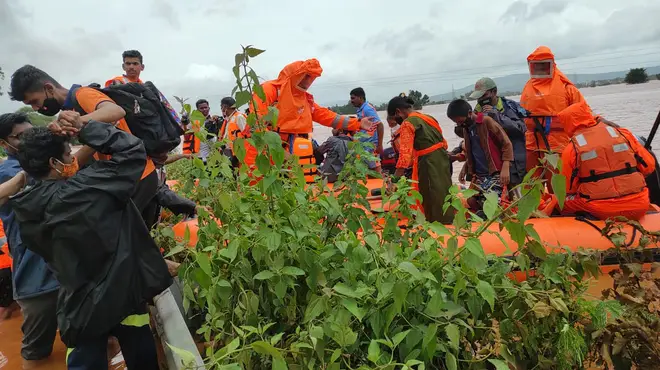
Nick Abbot 10pm - 1am
25 July 2021, 09:54

A government spokesman said more than 130,000 people were rescued from nearly 900 affected villages across Maharashtra state.
Days of landslides and flooding triggered by heavy monsoon rains in western India have killed at least 113 people and injured 50 others, officials said on Sunday, as rescuers scrambled to find at least 100 still missing.
A government spokesman said more than 130,000 people were rescued from nearly 900 affected villages across Maharashtra state.
Many were stranded on roofs or on top of buses on highways.

India’s navy also said it deployed helicopters to evacuate stranded people and sent rescue teams with boats to the region.
Officials said one of the worst-hit villages was Talai, 168 miles (270km) south of Mumbai, the capital of Maharashtra state and also India’s financial and entertainment hub.
The village of 59 households was buried by a massive landslide on Thursday, state official Sagar Pathak said.
Rescuers recovered two more bodies on Sunday, taking the number of villagers killed to 42, with around the same number still missing.
Mr Pathak said inclement weather, difficult terrain and large debris were hampering rescue efforts.

Authorities deployed hundreds of rescuers to the affected areas to locate missing people and take the stranded to safety, with scores of soldiers assisting.
Disasters caused by landslides and flooding are common in India during the June-September monsoon season, when heavy rain weakens the foundations of structures that are often poorly built.
The monsoon is crucial for rain-fed crops planted during the season, but the rain often causes extensive damage and kills scores of people each year.
Last weekend, more than 30 people were killed in landslides triggered by heavy monsoon rain in and around Mumbai.
Experts say heavy rainfall along India’s western coast is in line with how rainfall patterns have changed in the region in past years due to climate change, as the warming Arabian Sea is driving more cyclones and more intense rainfall over short periods of time.